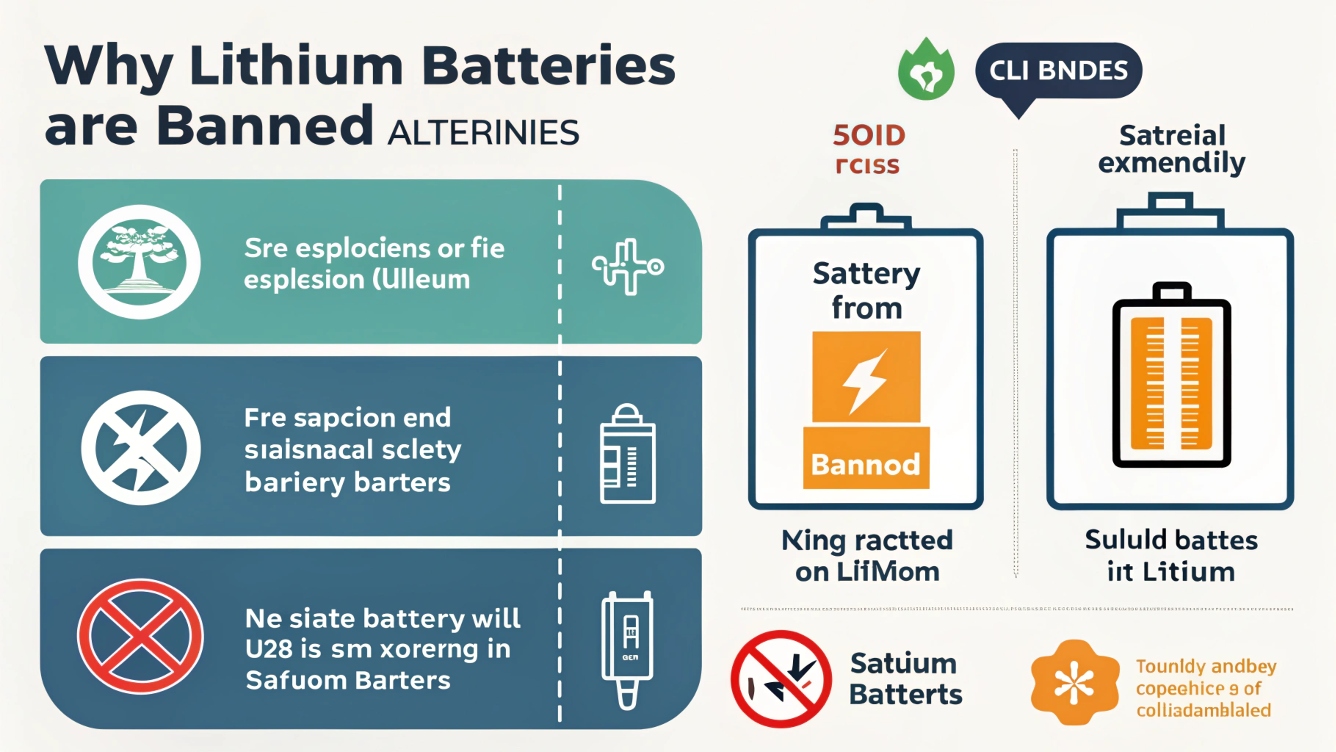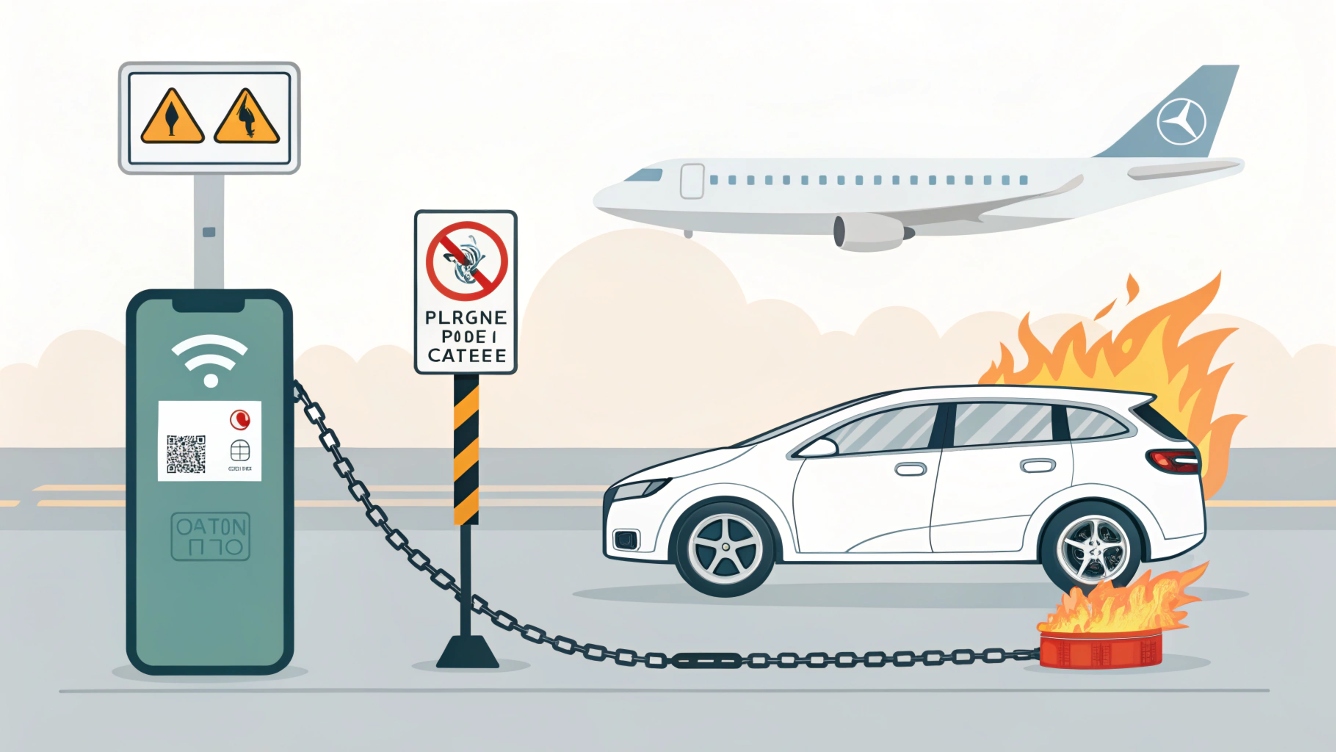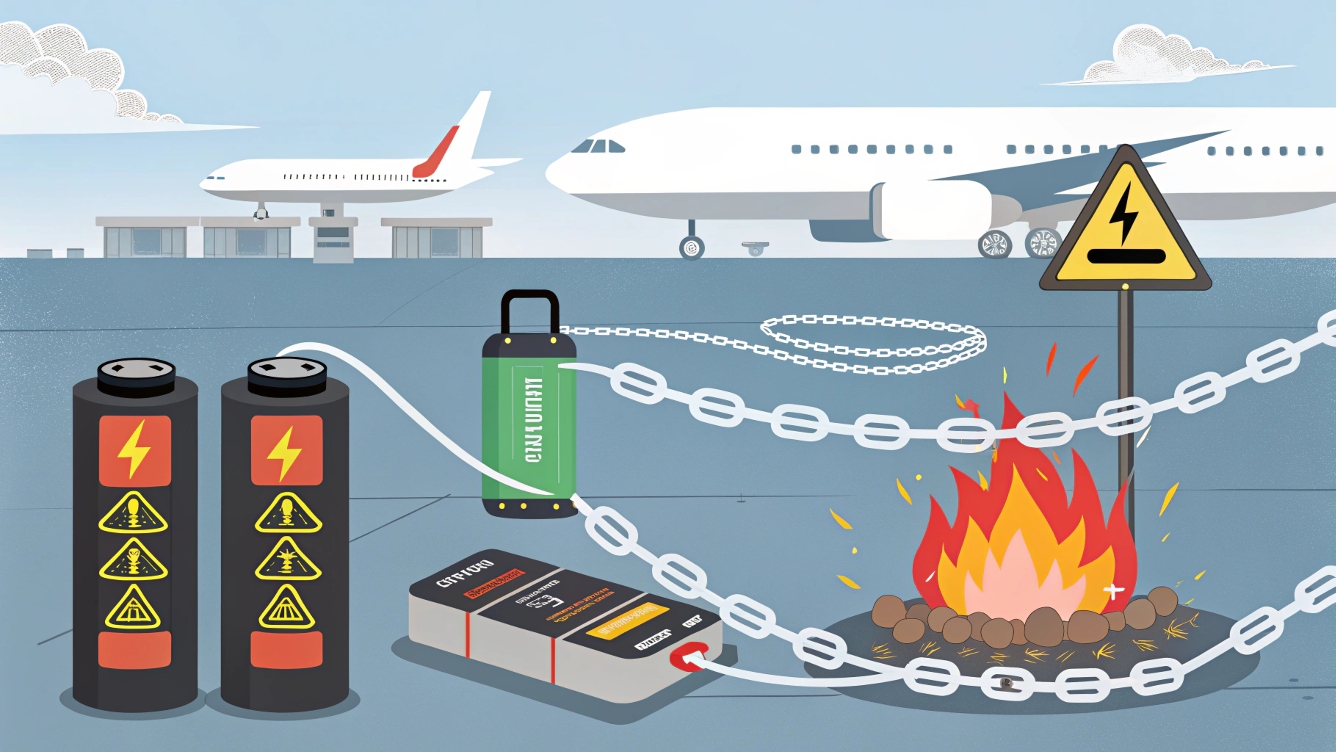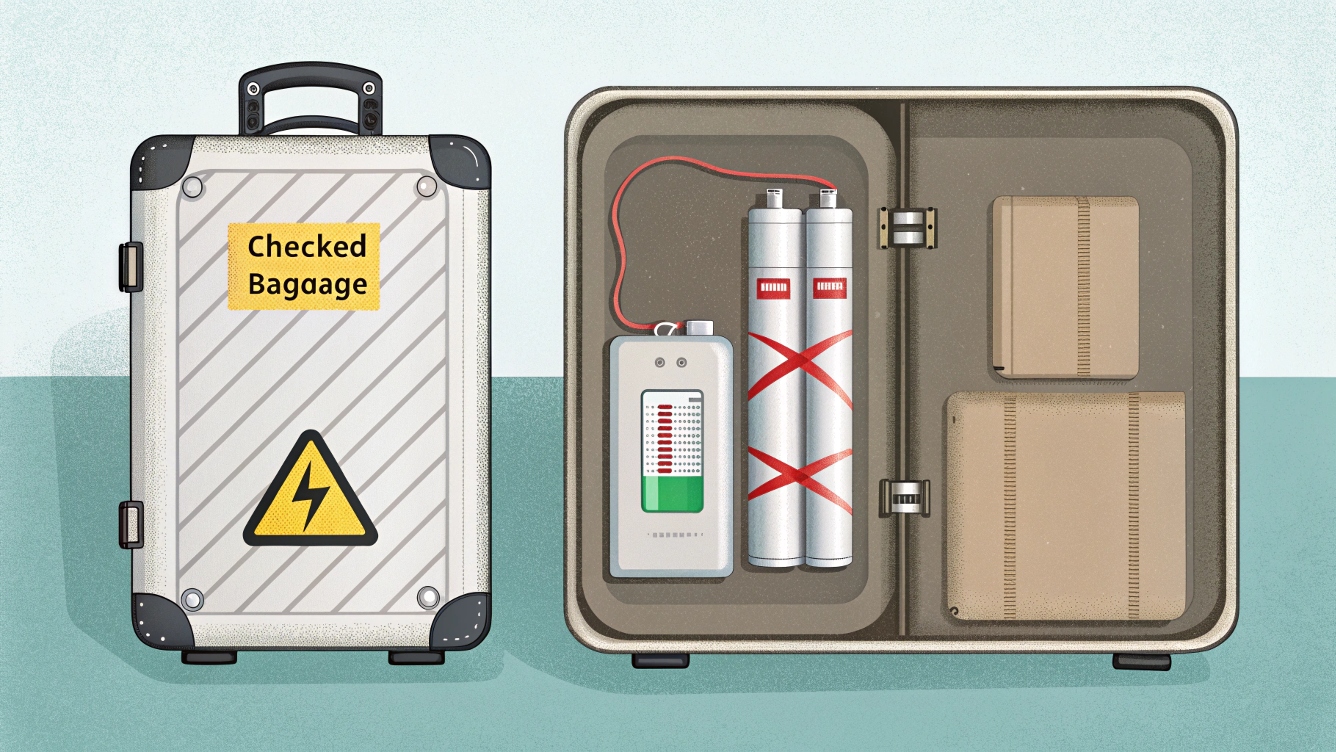لماذا يتم حظر بطاريات الليثيوم? مخاطر السلامة والبدائل المستدامة
خطر الحريق خلف حظر بطارية الليثيوم
بطاريات الليثيوم تعمل على تشغيل كل شيء من الهواتف الذكية إلى السيارات الكهربائية, لكن مخاطرهم في العبور - خاصة على الطائرات - أدت إلى لوائح صارمة. القضية الأساسية? هارب الحراري, سلسلة رد فعل حيث يؤدي ارتفاع درجة الحرارة إلى ظهور حرائق أو انفجارات. إليكم السبب في أن شركات الطيران تنقسم:استشهد[1]:استشهد[6]:
- الشوارد القابلة للاشتعال: تستخدم بطاريات الليثيوم أيون الشوارد السائلة التي تشتعل بسهولة تحت الضغط.
- تراكم الضغط: الخلايا التالفة تطلق الغازات, تسبب التورم والتمزق المحتمل.
- فشل سلسلة: يمكن أن تشعل البطارية المعيبة واحدة الخلايا المجاورة, كما رأينا في حوادث طائرة البضائع.

في 2025, تحديث IATA لوائح البضائع الخطرة (DGR 66th الطبعة) بطاريات الليثيوم المكلفة في النقل لتكون بنسبة ≤30 ٪ لتقليل مخاطر الحريق:استشهد[1]:استشهد[7].
قيود بطارية الليثيوم: ما هو محظور ولماذا
قواعد محددة طيران
- فحص الأمتعة: تحظر معظم شركات الطيران بطاريات الليثيوم الفضفاضة >100في أكياس محددة بسبب مخاطر الحرائق غير الخاضعة للإشراف:استشهد[2].
- بنوك السلطة: يقتصر على 27000 مللي أمبير في الساعة (99.9هل) على الرحلات الجوية; تتطلب الوحدات الكبيرة موافقة شركات الطيران:استشهد[3].
البطاريات التالفة: البطاريات المتورمة أو المتسربة محظورة عالميا من الرحلات الجوية.

أكثر أمانًا أنواع البطارية التقنيات الناشئة
1. بطاريات الحالة الصلبة
استبدال الشوارد السائلة مع البوليمرات الصلبة, هذه البطاريات تقضي على مخاطر الحرائق وتوفر كثافة طاقة 2x. تخطط تويوتا لتسويقها 2027:استشهد[2].
2. بطاريات الصوديوم أيون
وفرة الصوديوم واستقرارها تجعله بديلًا ليثيومًا. رموز الأمم المتحدة الجديدة (على سبيل المثال, و 3551) تصنيف حزم الصوديوم أيون للنقل الجوي الأكثر أمانًا:استشهد[7].
3. أنظمة البطارية المعيارية
ملكنا مجموعات تخزين الطاقة المعيارية اسمح للمستخدمين بتقسيم البطاريات الكبيرة إلى أصغر, وحدات متوافقة. على سبيل المثال:
- 10نظام KWH → أربع وحدات 2.5 كيلو وات ساعة (كل <100هل, شركات الطيران آمنة).
كيفية الامتثال ل 2025 قواعد النقل الليثيوم
للمستهلكين
- حدود الشحن: احتفظ بالبطاريات ≤30 ٪ شحن قبل الرحلات الجوية:استشهد[6].
- عبوة واقية: استخدم صناديق غير معتمدة مع اختبار المكدس 3 أمتار (إلزامي للشحنات التجارية):استشهد[7].
للشركات
- تحديثات التسمية: استبدل ملصقات "بطارية الليثيوم" بعلامات "بطارية" تُظهر أرقام الأمم المتحدة (على سبيل المثال, و 3556 للمركبات التي تعمل بالليثيوم):استشهد[7].
- توثيق: الحصول على موافقة الناقل للبطاريات عالية السعة (>100هل) بعد عام 2015:استشهد[1].
الحلول الشمسية: تقليل التبعية على البطاريات المحفوفة بالمخاطر
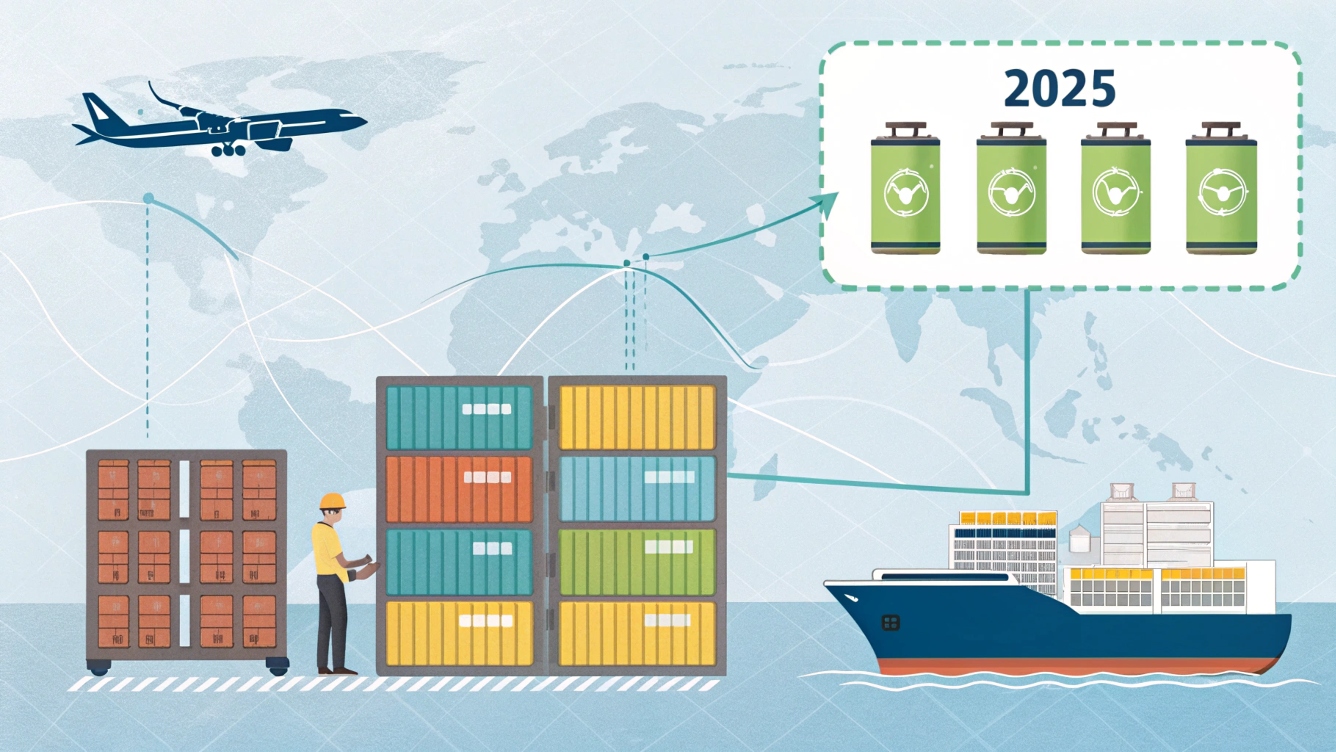
إقران الألواح الشمسية مع حزم بطارية متوافقة مع الطاقة الشمسية (مثلنا مجموعات شمسية خارج الشبكة) يقلل من الاعتماد على الليثيوم:
- الشحن خلال النهار: الطاقة الشمسية تعمل مباشرة على الأجهزة, تقليل دورات البطارية.
- الأنظمة الهجينة: استخدم الليثيوم لبطاريات التخزين والتدفق على المدى القصير لتلبية الاحتياجات الطويلة المدة.
دراسة الحالة: قام مالك المقصورة بقطع استخدام الليثيوم بواسطة 60% عن طريق إضافة صفيف شمسي 5KW + 2 وحدات النسخ الاحتياطي الصوديوم أيون.
مستقبل تخزين الطاقة: وراء الليثيوم
| تكنولوجيا | أمان | كثافة الطاقة | يكلف ($/كيلووات ساعة) | أفضل حالة استخدام |
|---|---|---|---|---|
| ليثيوم أيون | معتدل | 150-250 WH/KG | 90-130 | إلكترونيات المستهلك |
| الحالة الصلبة | عالي | 300-500 WH/KG | 150-200 | المركبات الكهربائية, الطيران |
| أيون الصوديوم | عالي | 120-160 WH/KG | 70-100 | تخزين الشبكة |
| بطاريات التدفق | عالية جدا | 15-25 WH/KG | 300-500 | المزارع الشمسية |
البيانات التي يتم الحصول عليها من تقارير الصناعة و Wikipedia: بطارية ليثيوم أيون.
خاتمة: احتضان أكثر أمانًا أنواع البطارية لمستقبل آمن

بينما تهدف حظر الليثيوم إلى منع الكوارث, توفر الابتكارات مثل الحالة الصلبة والأنظمة المعيارية بدائل أكثر أمانًا. في GYCX سولار, نضع الأولوية للتقنيات التي توازن الطاقة والسلامة - سواء كنت تطير بأدوات أو تشغيل منزل.
الخطوات التالية:
- استكشف حالات البطارية المقاومة للحريق للسفر المتوافق.
- تصميم نظام هجين مع شمسي + مجموعات التخزين.
- شاهدنا دروس السلامة لإتقان معالجة البطارية.
مراجع
- مخاطر حريق الليثيوم: ويكيبيديا: بطارية ليثيوم أيون.
- لوائح IATA: مستمدة من 2025 إرشادات الإصدار 66th DGR.

